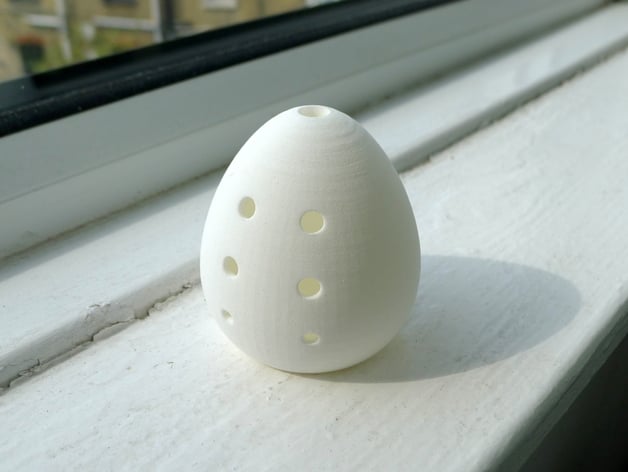
Xun (top blown egg shaped flute)
thingiverse
WARNING: This instrument isn't easy to play, despite its simplicity. To get sound out of it, you'll need to figure out the right blowing technique. It works like a top-blown flute or a bottle, where the angle and lip shape are crucial. If you've played one of those instruments before, you'll have an advantage. It looks similar to some Asian flutes but is missing a whistle on top that helps get the sound going. As a result, it's recommended to print out an ocarina if this doesn't work for you. Print quality also makes a big difference. If there are too many threads in the middle of the glass, they'll block airflow and ruin the sound. I've printed four myself and only three came out with good sound. The 6cm version is recommended to try first. This ancient Chinese musical instrument has been around since the Bronze or Late Stone Age, as archaeology proves. Wikipedia's description explains its rich history: https://en.wikipedia.org/wiki/Xun_(instrument) To get a good sound, blow from the top of the glass at an angle like you would on a flute or shakuhachi. Hold it vertically with your lower lip resting on the top edge, make a small hole in the middle of your lips and blow air in at around 45 degrees. Fingerhole opening controls pitch; the smaller version has higher pitch with six holes while the larger version has slightly lower pitch with eight holes. Here are some helpful tips on how to shape your lips for optimal blowing technique: https://www.wikihow.com/Blow-Into-a-Flute Check out this earlier video of the instrument in action: https://www.youtube.com/watch?v=4vallobApQc
With this file you will be able to print Xun (top blown egg shaped flute) with your 3D printer. Click on the button and save the file on your computer to work, edit or customize your design. You can also find more 3D designs for printers on Xun (top blown egg shaped flute).
